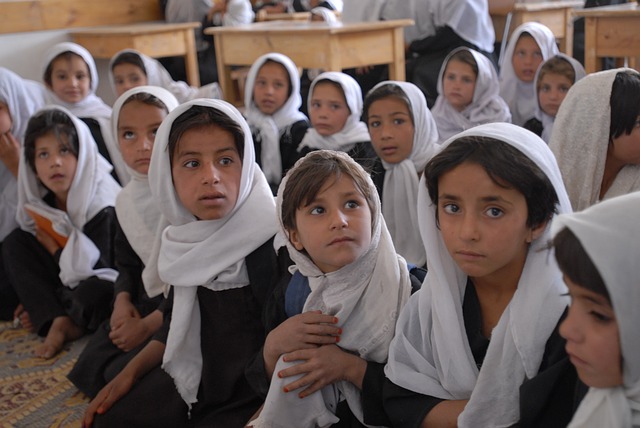More girls in Afghanistan than ever before are in school, yet a great deal of work remains to be done, especially in terms of changing the Afghan — and global — mindset about education for females. UNESCO estimates that 39 million school-age girls around the world are not enrolled in institutions of learning. Nearly 70 percent of illiterate adults are women and few countries have achieved gender equality in school enrollment.
Research has shown that education has universal economic benefits. Education drives both social and economic development, while improving the overall well-being of entire communities. Statistics show that an additional year of schooling has the power to increase a young woman’s earnings by 10 to 20 percent. As women begin to earn more, a nation becomes significantly more economically productive. The World Bank has collected data showing that investment in girls’ education reaps surprisingly high returns in terms of economic growth.
A country’s gross domestic product can increase by up to 1.5 percent through the expansion of educational opportunities for females. In addition, wealth disparities between classes start to dwindle and social development occurs as health care outcomes improve and women begin to contribute politically.
With an understanding of the benefits of education, especially among young women, Aid Afghanistan for Education has created a number of programs to jump-start the Afghan education system and empower young girls in the country. For nearly 15 years, the organization has provided educational opportunities for thousands of young people despite some hurdles.
Educational Programming Through Aid Afghanistan for Education
Aid Afghanistan for Education focuses its resources on creating high-quality educational programs for marginalized Afghans, both girls and boys. Many of these programs focus on the needs of females who were unable to attend school due to conflict, early marriage, or other restrictions, such as a law that prevented children older than 10 from enrolling in the first grade. When schools for girls were outlawed in Afghanistan, the organization created five underground institutions that provided education to hundreds of girls. Many of these girls went on to enter the regular school system when they were able to do so.
Since education has become a priority in Afghanistan, the organization has created 13 permanent schools in nine provinces. Over the years, these schools have provided education for more than 3,000 young females and more than 100 males. Through an arrangement with the Afghan Ministry of Education, these students have graduated from the organization’s schools with a high school diploma. The agreement allows students to continue in a university if they choose. The schools also offer seniors vocational training in accounting, office management, and other subjects to help them secure jobs after graduation.
With an understanding of the special needs of female students, the organization remains the only one with a program for women who live in safe houses because they have experienced abuse at the hands of their husbands or families. The opportunity allows them to finish high school and become financial independent. The organization’s schools have flexible timetables that can change according to the unique needs of the students. Education is offered year-round so that students can complete their entire degree in as little as eight years.
The Rural Livelihoods and Employment Program
Aid Afghanistan for Education maintains a strong commitment to rural education and seeks to identify and address issues that limit access to education in these areas. Throughout Afghanistan, poverty remains one of the most significant barriers to education. In order to address this problem, the organization has designed a Rural Livelihoods and Employment Program, which provides a family-centered solution to the poverty crisis. The program integrates with existing educational opportunities.
The unique program emphasizes literacy on a family-wide level and provides an opportunity to learn about entrepreneurship and business development. Aid Afghanistan for Education aims to train families to become successful business owners with a six-month intensive experience. Families have the chance to work with a nationwide small business incubator that offers guidance on everything from microfinance to accounting. Depending on the enterprise that a particular family chooses, the organization may also offer vocational training so that individuals can gain the skills they need for success.
Creating a Clean Future for Education with the Prosperity Project
In 2003, Aid Afghanistan for Education teamed with the Afghan International Chambers of Commerce to create the Prosperity Project, which was designed to clean the city of Kabul in order to promote sanitation and health among Afghans living in the city. Cleanliness is an important foundation for education. The project began with a pilot in Quala-e-Fattullah, where a 16-foot pile of garbage had collected in front of an elementary school. Many of the children studying at the school have scars on their faces as a result of the mosquitoes that fed on the trash. Seven workers used two cars to remove the pile of garbage to a dump site outside of the city, which allowed the children to begin playing outside for recess once again.
The project also involved the distribution of compost boxes and nylon bags to houses in the surrounding neighborhood. Members of the organization spoke with families about the proper disposal of trash and sanitation. Altogether, 400 homes were visited and provided with a better means of trash disposal. The Ministry of Agriculture agreed to collect compost materials from these homes every four months for distribution in agricultural fields around the city.

